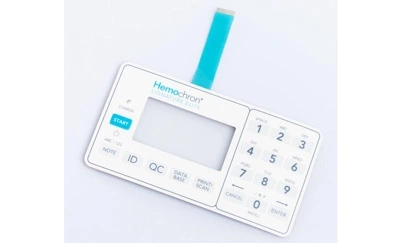
In today's fast-paced technological world, the demand for innovative and reliable user interface solutions continues to grow. One such advancement that has gained prominence is waterproof flexible membrane switches. These cutting-edge switches are revolutionizing the way we interact with devices and equipment in various industries. In this article, we will explore the fascinating world of waterproof flexible membrane switches, delving into their construction, applications, benefits, and much more.

1. Introduction
2. What Are Waterproof Flexible Membrane Switches?
3. How Are Waterproof Flexible Membrane Switches Constructed?
4. The Advantages of Using Waterproof Flexible Membrane Switches
5. Applications of Waterproof Flexible Membrane Switches
6. Industries That Benefit from Waterproof Flexible Membrane Switches
7. Why Waterproofing Matters
8. Ensuring Durability and Longevity
9. Customization Options
10. Maintenance and Cleaning Tips
11. The Future of User Interfaces
12. Environmental Impact
13. Conclusion
14. FAQs
In an era where touch-sensitive interfaces have become an integral part of our lives, waterproof flexible membrane switches are making waves in the technology industry. These switches offer a seamless and reliable means of interacting with various devices and equipment, even in challenging environments. Let's dive deeper into what makes them so unique.
Waterproof flexible membrane switches are user interface components that consist of multiple layers of flexible materials, including polyester and polycarbonate. These switches are designed to be impervious to liquids, making them ideal for applications where moisture, dust, or spills are a concern.
These switches are typically constructed with the following layers:
Graphic Overlay: The top layer is the graphic overlay, which features printed icons, labels, and graphics.
Top Circuit Layer: Beneath the graphic overlay is the top circuit layer, which contains the conductive traces.
Spacer Layer: The spacer layer keeps the top and bottom circuit layers apart when the switch is not in use.
Bottom Circuit Layer: This layer complements the top circuit layer and contains additional conductive traces.
Adhesive Layer: The adhesive layer bonds the membrane switch to the device or equipment.
These switches offer several advantages:
Durability: They can withstand harsh environments, including exposure to liquids, extreme temperatures, and UV radiation.
Tactile Feedback: Membrane switches provide tactile feedback, enhancing user experience.
Customization: They are highly customizable in terms of design, shape, and functionality.
Cost-Effective: Membrane switches are cost-effective compared to other user interface solutions.
Longevity: They have a long lifespan, ensuring reliable performance over time.
Waterproof flexible membrane switches find applications in various industries, including:
Medical Devices: Used in medical equipment, such as patient monitors and diagnostic devices.
Industrial Control Panels: Vital for controlling machinery and equipment in manufacturing.
Marine Electronics: Ideal for navigation and communication systems on boats and ships.
Automotive: Found in car interiors for functions like window controls and dashboard displays.
Consumer Electronics: Used in appliances like microwave ovens and coffee makers.
The versatility and reliability of these switches benefit industries such as healthcare, automotive, industrial automation, marine, and aerospace. They ensure that user interfaces remain functional even in demanding conditions.
Waterproofing is crucial because it protects the internal components of devices from moisture, preventing damage and ensuring safe operation. Waterproof flexible membrane switches act as a barrier, safeguarding the sensitive electronics within.
To maintain the durability and longevity of waterproof flexible membrane switches, regular maintenance and proper cleaning are essential. Avoid using abrasive materials and harsh chemicals, as they can damage the switch's surface.
Manufacturers offer a wide range of customization options, allowing businesses to tailor membrane switches to their specific needs. This includes choosing the layout, size, color, and even incorporating backlighting for enhanced visibility.
Proper maintenance involves cleaning the switches regularly with a damp, non-abrasive cloth. Ensure that any spilled liquids are promptly wiped away to prevent ingress into the switch.
As technology continues to advance, waterproof flexible membrane switches are likely to become even more versatile and integrated into our daily lives. Their reliability, durability, and adaptability make them a key player in the future of user interfaces.
These switches are not only functional but also environmentally friendly. Their long lifespan reduces the need for frequent replacements, contributing to sustainability efforts.
Waterproof flexible membrane switches are at the forefront of user interface technology, offering durability, versatility, and customization options. Their ability to thrive in challenging environments makes them indispensable in various industries. As technology evolves, these switches will continue to play a pivotal role in shaping the user interfaces of the future.
Are waterproof flexible membrane switches expensive?
Waterproof flexible membrane switches are cost-effective compared to many alternative interface solutions, offering great value for their durability and versatility.
Can I customize the appearance of membrane switches?
Yes, membrane switches are highly customizable in terms of design, color, and functionality, allowing you to create a unique user interface.
How do I clean and maintain waterproof flexible membrane switches?
Regularly clean the switches with a damp, non-abrasive cloth, and avoid using harsh chemicals. Promptly wipe away any spills to prevent damage.
Which industries benefit the most from waterproof flexible membrane switches?
Industries such as healthcare, automotive, industrial automation, marine, and aerospace benefit significantly from the reliability of these switches.
What is the environmental impact of using membrane switches?
Membrane switches contribute to sustainability efforts by having a long lifespan, reducing the need for frequent replacements and minimizing electronic waste.